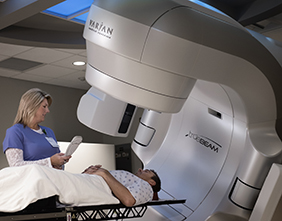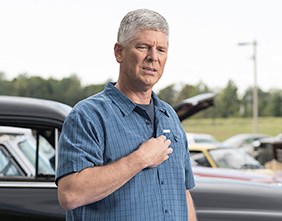Lima Memorial Health Focus: Many Treatment Options for Chronic and Acute Pain
posted on: 6/19/2017 10:23:47 AM
Health & Fitness Guest Columnist
Tony Rampulla, DPT, CSCS, Physical Therapy Manager
Lima Memorial Health System
Many people around the world are living with pain and wish for relief. There are many treatment options available to treat chronic and acute pain, and it is very important to choose the best method that poses the least health risk to the individual. One strategy used to treat pain is through the use of pharmaceutical prescription medications such as opioids.

In recent years the use of opioids, synonymously known as narcotics, has grown exponentially and availability of these drugs has reached an all-time high. As the rate of prescribed opioids increases, the negative impact these medications have on society also increases. Opioid use risks include depression, addiction, overdose and death. The Centers for Disease Control and Prevention reported that in 2015 alone, 33,000 Americans lost their lives because of opioid use, and nearly half of these deaths were directly prescribed an opioid. Although prescription opioids offer potential benefits, we need to shine light on alternative pain treatments.
Treatment of chronic pain is often more successful when handled by a multidisciplinary team comprised of physicians, nurses, pharmacists, social workers and physical therapists. The team uses standardized tests and measures to help identify underlying impairments, treat the conditions, communicate findings and educate the patient and family on strategies they can employ at home for continued success. Each member of the team plays a pivotal role in the treatment chronic pain.
As a physical therapist, I see patients with pain in the clinic every day, and each is different. We have to rely on our clinical skills, starting with a comprehensive evaluation, to help diagnose and treat the underlying problem. Pain occurs in the body as a marker that something is not right. Pain perception is a warning message from the body to the brain. Our bodies are very unique in that we have an inert ability to compensate for deficiencies throughout. These patterns of compensation develop for many reasons such as improper body mechanics, repetitive force, old injuries and overall general weaknesses. With time, compensation can cause increased pain. Through a physical therapy referral, diagnosis and treatment, you may be able to decrease some of your pain by restoring normal function of the body. This can then provide an increased quality of life without relying on narcotics.
So, how can a physical therapist treat someone with complaints of pain? As aforementioned, the treatment begins with accurately assessing and identifying the underlying impairments. From there, we use interventions, such as strengthening techniques, stretches, manual treatment, postural training and extensive patient education to improve the overall function of the body. Additionally, physical therapists use multiple types of modalities such as electrical stimulation, ultra sound, iontophoresis, phonophoresis and cryotherapy to help treat pain. When modalities are used in conjunction with other conventional and specialized techniques, the results are even greater.
If you are experiencing pain, talk with your primary care provider about alternative rehabilitative treatments for long-term relief.
As health care providers, we must make every conscious effort to provide education and resources on the programs and treatments available that would minimize the use of opioids and put an end to this epidemic.
Originally published in The Lima News Health and Fitness section.
Website





